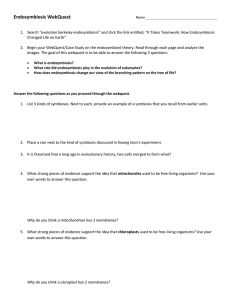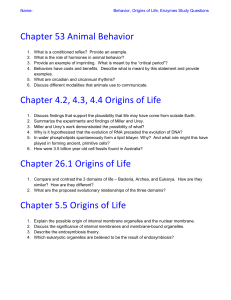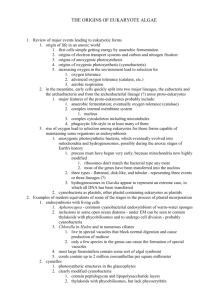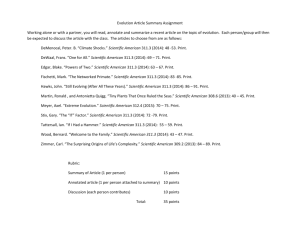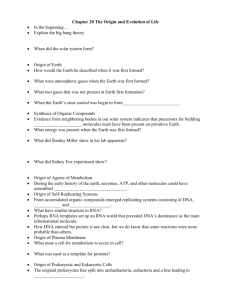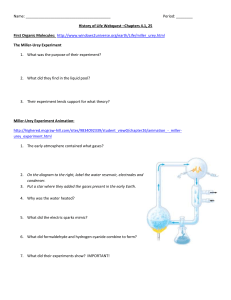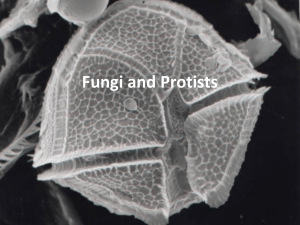Origins of Life: Biology Learning Guide
advertisement
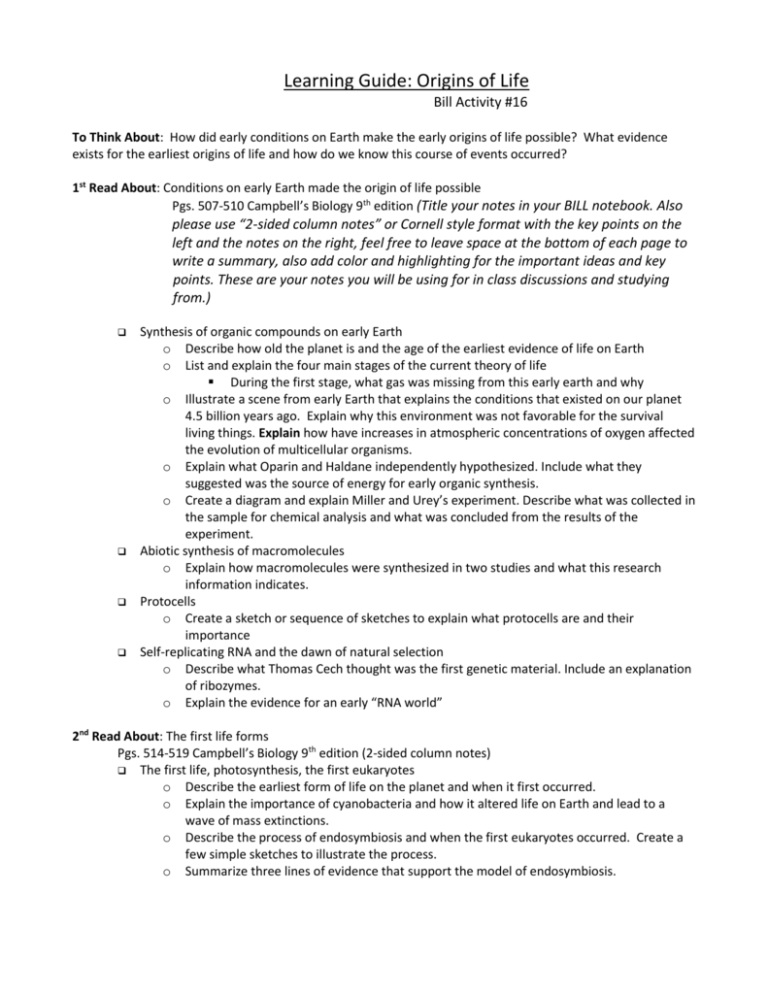
Learning Guide: Origins of Life Bill Activity #16 To Think About: How did early conditions on Earth make the early origins of life possible? What evidence exists for the earliest origins of life and how do we know this course of events occurred? 1st Read About: Conditions on early Earth made the origin of life possible Pgs. 507-510 Campbell’s Biology 9th edition (Title your notes in your BILL notebook. Also please use “2-sided column notes” or Cornell style format with the key points on the left and the notes on the right, feel free to leave space at the bottom of each page to write a summary, also add color and highlighting for the important ideas and key points. These are your notes you will be using for in class discussions and studying from.) Synthesis of organic compounds on early Earth o Describe how old the planet is and the age of the earliest evidence of life on Earth o List and explain the four main stages of the current theory of life During the first stage, what gas was missing from this early earth and why o Illustrate a scene from early Earth that explains the conditions that existed on our planet 4.5 billion years ago. Explain why this environment was not favorable for the survival living things. Explain how have increases in atmospheric concentrations of oxygen affected the evolution of multicellular organisms. o Explain what Oparin and Haldane independently hypothesized. Include what they suggested was the source of energy for early organic synthesis. o Create a diagram and explain Miller and Urey’s experiment. Describe what was collected in the sample for chemical analysis and what was concluded from the results of the experiment. Abiotic synthesis of macromolecules o Explain how macromolecules were synthesized in two studies and what this research information indicates. Protocells o Create a sketch or sequence of sketches to explain what protocells are and their importance Self-replicating RNA and the dawn of natural selection o Describe what Thomas Cech thought was the first genetic material. Include an explanation of ribozymes. o Explain the evidence for an early “RNA world” 2nd Read About: The first life forms Pgs. 514-519 Campbell’s Biology 9th edition (2-sided column notes) The first life, photosynthesis, the first eukaryotes o Describe the earliest form of life on the planet and when it first occurred. o Explain the importance of cyanobacteria and how it altered life on Earth and lead to a wave of mass extinctions. o Describe the process of endosymbiosis and when the first eukaryotes occurred. Create a few simple sketches to illustrate the process. o Summarize three lines of evidence that support the model of endosymbiosis. 3rd Interact: Watch Mr. Andersen’s videos. Draw arrows on the attached concept map and answer the video questions. Feel free to add additional notes on the video guide as needed. First: Mr. Andersen’s “Abiogenesis” video Next: Mr. Andersen’s “Origin of Life-Scientific Evidence” video. Last: Mr. Andersen’s “Endosymbiosis” video. (take notes on this using your BILL notebook) Supplementary Resources: Click the links below for more information to help you learn more about this lesson. McGraw-Hill: Miller-Urey Experiment Animation Massasoit Community College: Miller-Urey Experiment Explanation (animated) BFW Publishers:Interactive Origins of Life Tutorial McGraw-Hill: Endosymbiosis Animation Kimball’s Biology Pages:Endosymbiosis and the Origin of Eukaryotes UC-Berkeley: Endosymbiosis-Lynn Margulis Indiana University-Purdue University Indianapolis: Endosymbiotic Theory Sumanas, Inc.: The Evolution of Organelles ExploringOrigins.org (via Boston’s Museum of Science): Ribozymes and The RNA World Learn More: For more information about the origins of life and how the first cells developed, use the links below: The University of Utah Learn.Genetics: The Evolution of The Cell UC-Berkeley: Introduction to the Archaea UC-Berkeley: History of Life ExploringOrigins.org (via Boston’s Museum of Science): A Timeline of Life’s Evolution UC-Berkeley: Studying the Origin of Life


